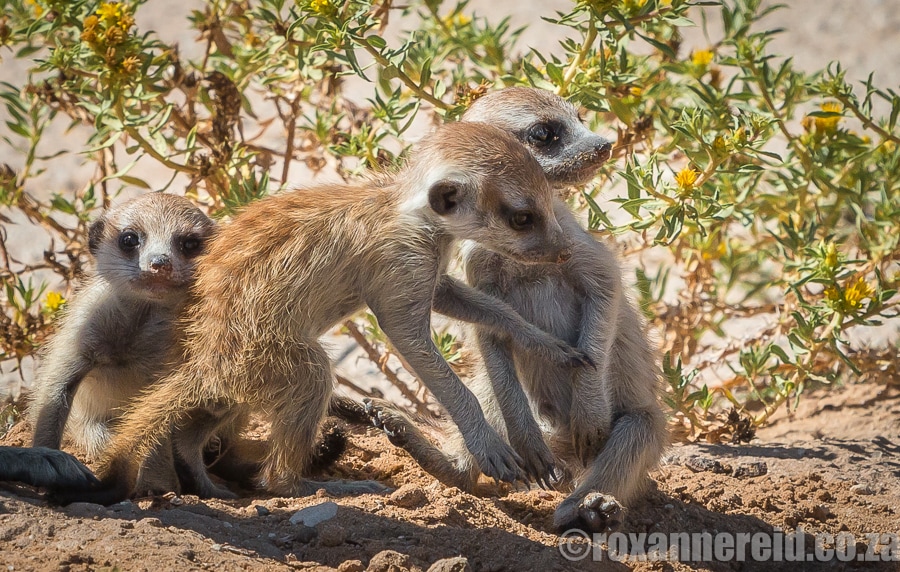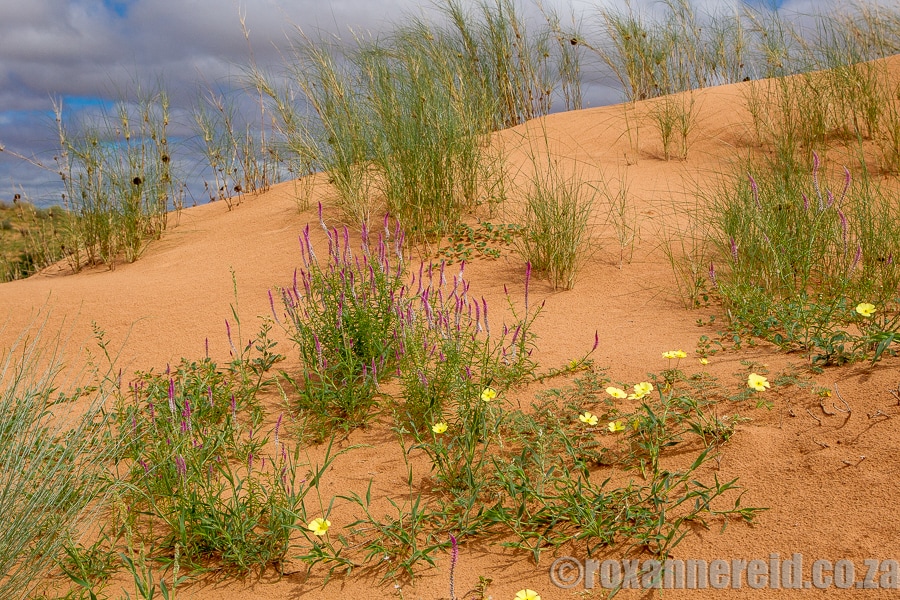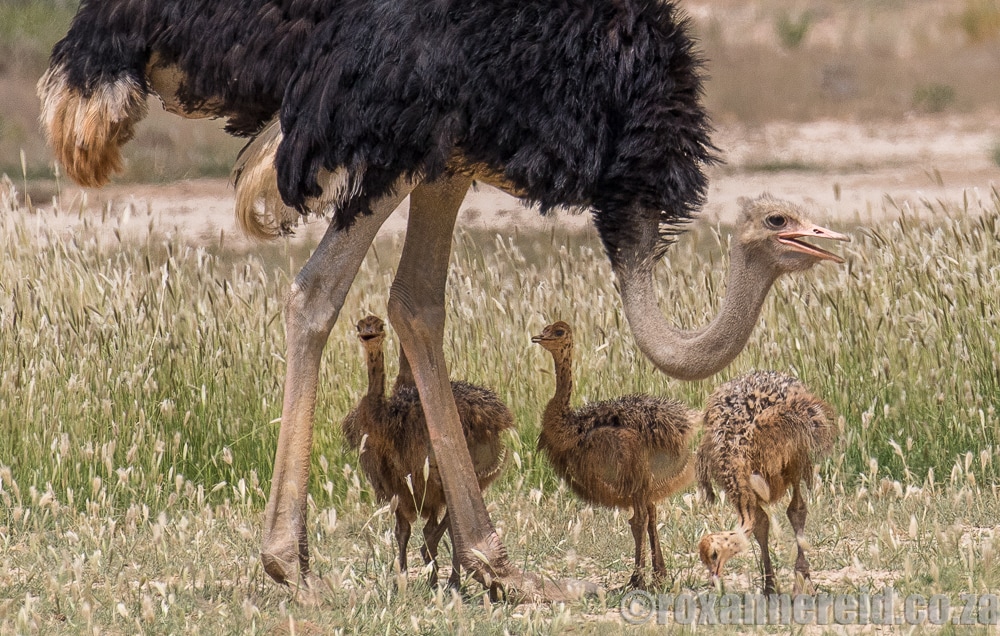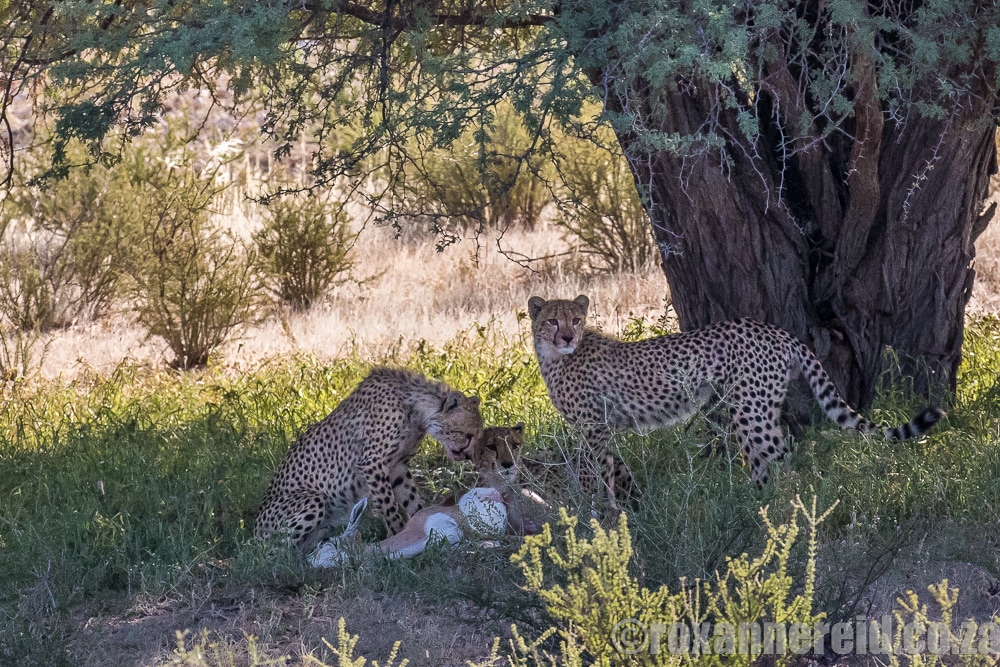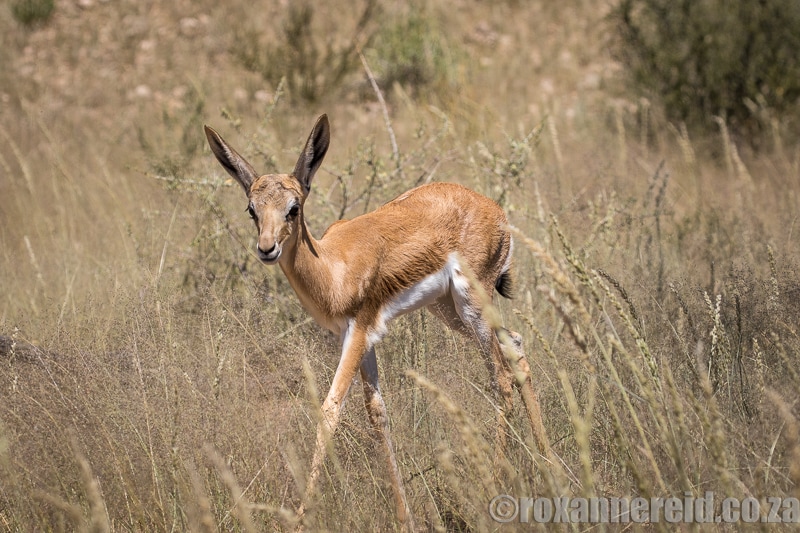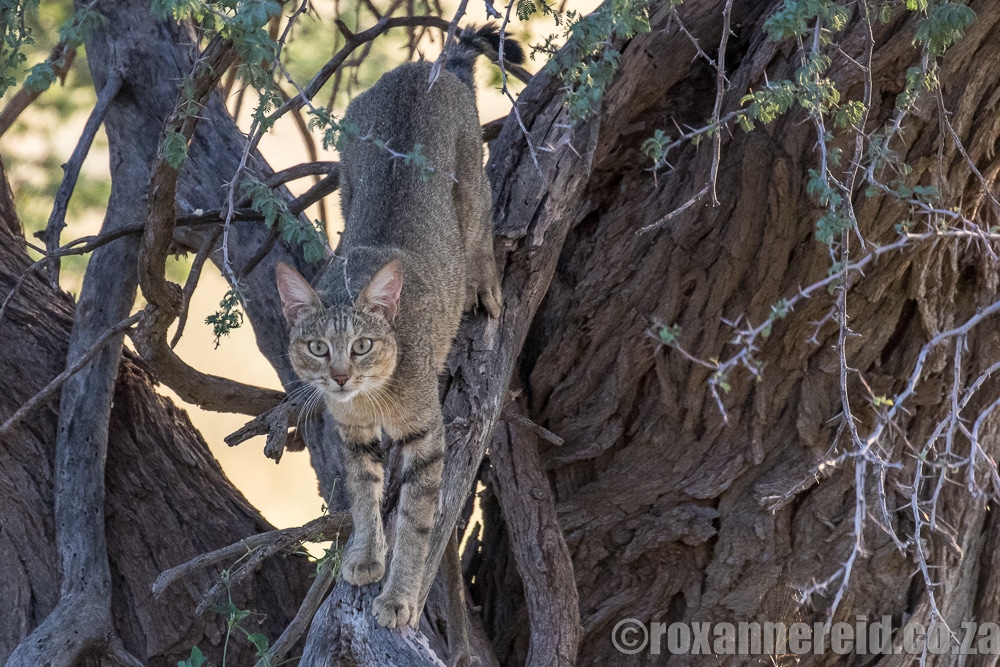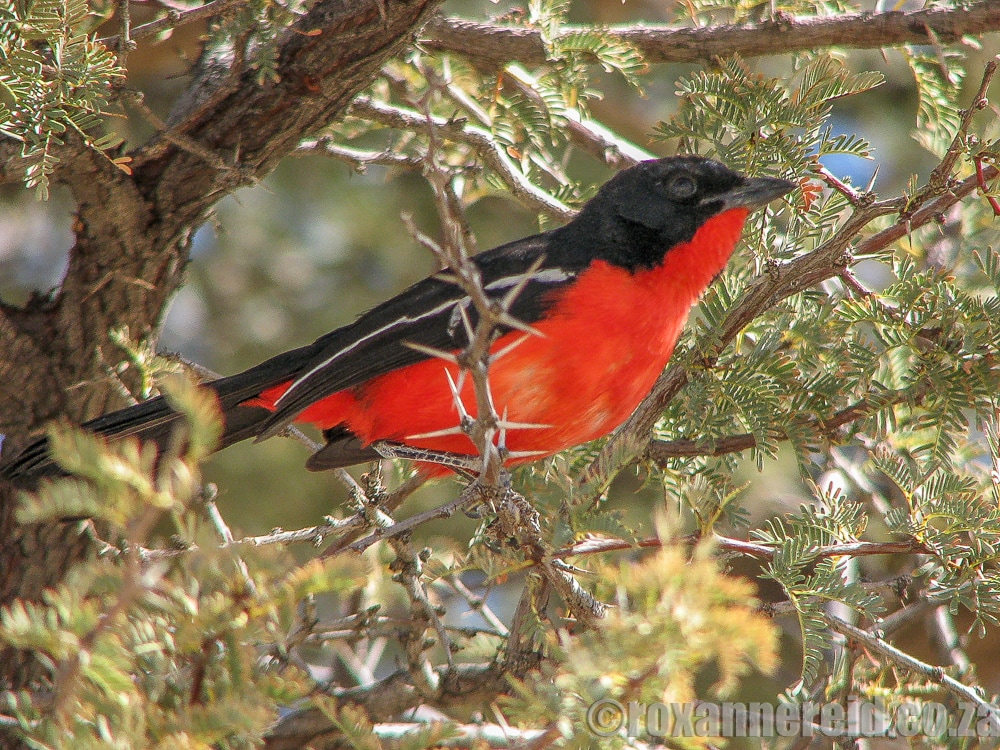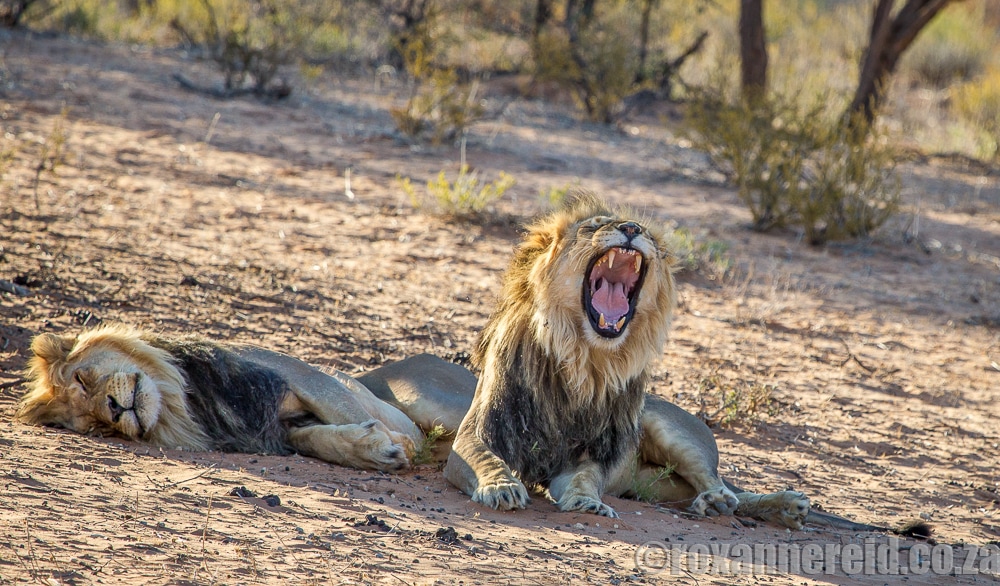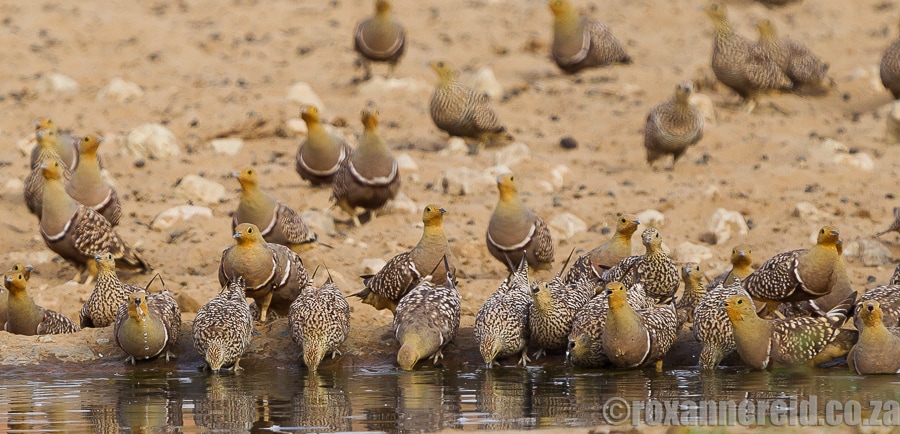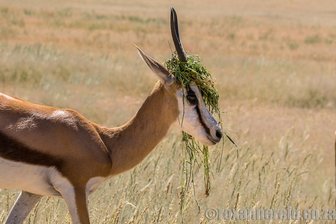
By Roxanne Reid
In some 40 visits to the Kalahari we’ve racked up about 400 days. And they’ve always been exhilarating. But on a recent trip around the Northern Cape’s arid parks, we had only 48 hours in the Kgalagadi Transfrontier Park. We were worried it wouldn’t be enough. We were wrong.
In some 40 visits to the Kalahari we’ve racked up about 400 days. And they’ve always been exhilarating. But on a recent trip around the Northern Cape’s arid parks, we had only 48 hours in the Kgalagadi Transfrontier Park. We were worried it wouldn’t be enough. We were wrong.
Our first sighting the afternoon we arrived was my favourite kind – a meerkat family. Mom, dad and three kids were at the entrance to their burrow, all alert and standing tall.
We sat quietly and although dad stayed on guard duty, the rest of the family gradually relaxed. The kids started to play and mom began tidying the entrance to the burrow, flinging sand behind her as she dug, not caring that dad was getting a face-full. The Littles popped up and down, in and out of the burrow, went on short adventures, wrestled each other and fell down, all catching the soft rays of the late afternoon sun.
We sat quietly and although dad stayed on guard duty, the rest of the family gradually relaxed. The kids started to play and mom began tidying the entrance to the burrow, flinging sand behind her as she dug, not caring that dad was getting a face-full. The Littles popped up and down, in and out of the burrow, went on short adventures, wrestled each other and fell down, all catching the soft rays of the late afternoon sun.
Next morning we drove the road that hugs the dry Auob riverbed. The veld was green in March, a happy reminder that good rains fell this summer. Although the grass was long – not always great for spotting small creatures – patches of yellow dubbeltjies (devil’s thorn), purple brandbone (thunderbolt flowers) and mauve cat’s tails were generous compensation.
A tawny eagle surveying its kingdom from the top of a camel thorn tree, a pygmy falcon perching on a dead tree, and an ostrich tending a gaggle of chicks were early excitements.
Then we found three cheetahs on a springbok kill, resting in the shade of a camel thorn festooned with weaver nests. They’d eaten well, but every now and again would come back to the carcass for a couple of mouthfuls.
Further north three meerkat were busily excavating their burrow and a small herd of giraffe walked the veld before we spotted a mother cheetah with her four almost-grown cubs. We stopped to watch a baby springbok only just beginning to get the hang of its lanky legs and a grownup looking silly with a hat of greenery.
That evening we went on a sunset drive from Mata Mata with field guide Johan Vaalbooi, on loan from Nossob camp for the night. It was a super chance to get out of camp to watch the sunset and see animals after dark. But I’ll tell you more about that in another post.
Our last morning
So many snapshots to take with our minds, to remember and cherish when we were back in the city. A field of bright yellow devil’s thorn flowers; a huge herd of springbok silhouetted against the sun rising through clouds; the orange sun rising through the branches of a camel thorn tree.
We found two African wild cats in the lower branches of a camel thorn. One of them climbed down towards a fallen branch, stopping to look right at us. The other joined it on the horizontal branch and there was some hissing and fisticuffs before peace returned.
Our last morning
So many snapshots to take with our minds, to remember and cherish when we were back in the city. A field of bright yellow devil’s thorn flowers; a huge herd of springbok silhouetted against the sun rising through clouds; the orange sun rising through the branches of a camel thorn tree.
We found two African wild cats in the lower branches of a camel thorn. One of them climbed down towards a fallen branch, stopping to look right at us. The other joined it on the horizontal branch and there was some hissing and fisticuffs before peace returned.
Lilac breasted roller, crimson-breasted shrike, African hoopoe, a bateleur preening at the top of a dead tree, swallow-tailed bee-eaters – there are so many colourful birds to see in the Kgalagadi if you take it slow and keep a lookout. If you can enjoy them as much as you enjoy sightings of big guns like lions and leopards, the Kgalagadi will make your heart sing.
There were lions too, as well as the cheetah mom with four cubs we’d seen the day before. She was looking interested in a springbok in the riverbed while the youngsters chased and wrestled each other as it started to drizzle.
Over the years we’ve seen springbok give birth, cheetahs hunt and kill springbok or ostrich, leopards play with their cubs, lions climb (and fall out of!) trees, and puff adders wrestle for dominance. Each sighting has value, no matter how small.
A martial eagle soaring overhead; a honey badger trotting pigeon-toed through the veld; Namaqua sandgrouse calling as they settle at a waterhole; wildebeest clowning around; electric storms crashing through the sky above the dunes. These are the simple pleasures of the Kgalagadi. And that's what lures us back time and again.
My name is Roxanne and I’m a Kgalagadi addict.
Did you enjoy the article? Pin this image!
My name is Roxanne and I’m a Kgalagadi addict.
Did you enjoy the article? Pin this image!
You may also enjoy
Sounds of the Kalahari
The Kalahari in bloom
Copyright © Roxanne Reid - No words or photographs on this site may be used without permission from roxannereid.co.za
Sounds of the Kalahari
The Kalahari in bloom
Copyright © Roxanne Reid - No words or photographs on this site may be used without permission from roxannereid.co.za
